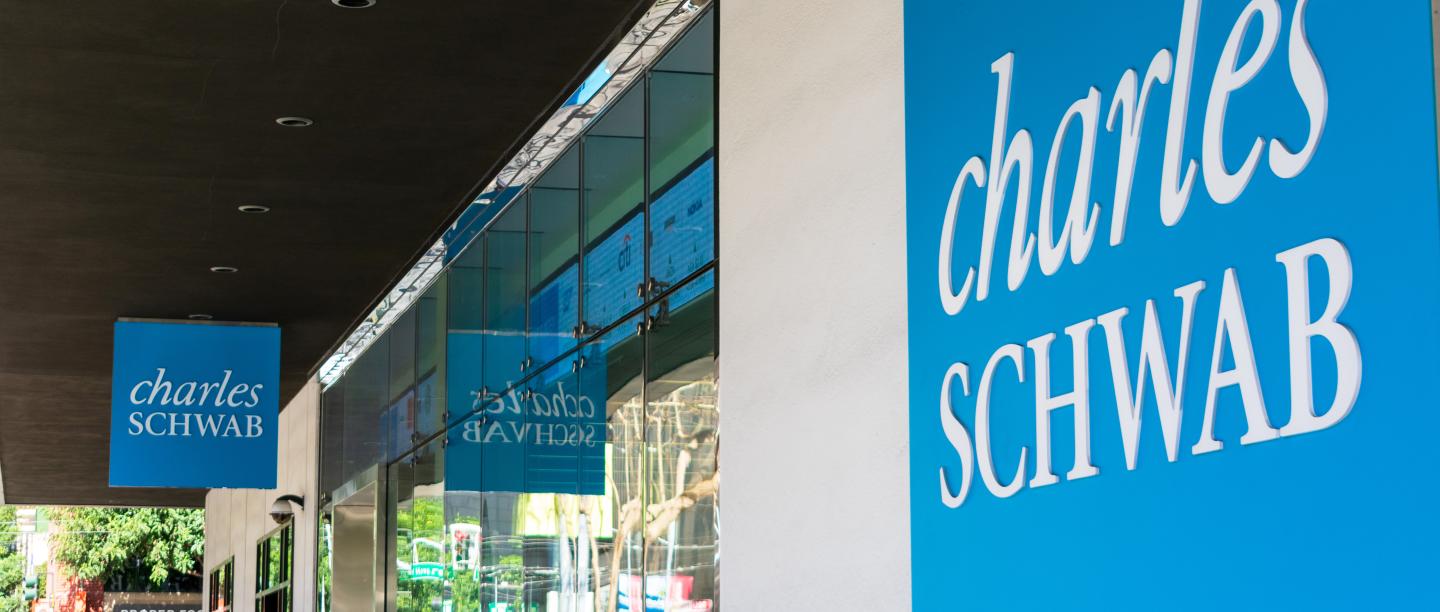Charles Schwab Corp – One year after the Silicon Valley Bank collapse
The financial crisis that was not to be
By Alex Warnaar, PM Capital
Introduction
PM Capital first purchased shares in Charles Schwab Corp in May 2023, not long after Silicon Valley Bank collapsed. Our investment was opportunistic. Amidst the regional banking crisis in the United States, the market discarded anything with parallels to Silicon Valley Bank. Schwab found its stock price in freefall, and its CEO Walter Bettinger defended the company on televised CNBC financial news.
Having followed Schwab closely from the sidelines for some time, we questioned the market reaction and examined the opportunity. It turns out, so did Schwab’s own retail clients. On a typical day, the most traded stock in the United States is a large capitalisation favourite, such as Tesla or Apple, perhaps Nvidia nowadays. Bettinger stated, however, that on Friday 10 March 2023, at the epicenter of the crisis, the most purchased stock that day on Schwab’s platform by their 35 million clients was Schwab stock itself.[1]
Understanding Schwab’s balance sheet dynamics
The wider market sold Schwab stock off due to a misaligned balance sheet. The market correctly reasoned that Schwab, beneath the appearance of being an online retail brokerage where you go to buy and sell stocks, was in fact regulated as a bank, had a balance sheet that resembled a bank’s balance sheet, and was exposed to similar risks to a bank. Like Silicon Valley Bank, Schwab held long-dated fixed income securities that were now underwater due to higher interest rates; on paper Schwab was sitting on billions of dollars of mark-to-market losses.
All of this was well understood; where we differed was our view on the implications of these problems. Mark-to-market losses were an earnings problem but would only become a liquidity or solvency problem if client deposits fled, forcing those losses to be realised, and thus burn through the capital base. For Silicon Valley Bank, with a concentrated and flighty pool of deposit holders, this was its undoing; for Schwab, with a diverse and sticky pool of clients, a similar outcome was unlikely. This was the basis of our investment.
The strength of Schwab’s retail financial services business model
Schwab is one of the great American retail financial services franchises with nearly $9 trillion in client assets. From the client’s perspective Schwab provides low cost and user-friendly stock broking and wealth management services. Schwab was the first mainstream broker to reduce standard stock-trading commissions to zero and customer service generally answers the phone within 30 seconds.
Of Schwab’s 35 million client accounts, the average account has slightly over $200,000 in net assets. Clients typically invest most of the $200,000 in stocks and bonds, but on average maintain 10 to 12 percent in cash. Of the 10 to 12 percent cash balance, clients invest up to half in money market funds or other high yield cash products, and leave the other half idle at the bottom of the account as transactional cash.
The transactional cash balance is always in flux as dividends and bond coupons come in, clients buy and sell stocks, younger clients make retirement contributions, older clients make retirement withdrawals, and so forth. This transactional cash, the idle half of the cash – perhaps $10,000 per client – is critical to Schwab’s business model. Schwab pays clients a relatively low yield on this balance, currently 45 basis points, but reinvests the proceeds in longer dated fixed income securities at higher yields. The spread is Schwab’s to keep.
Summary
Ultimately, if much of this transactional cash remained in place, as it has, Schwab’s balance sheet would with time naturally realign itself. Our view was that the sources of transactional cash deposits were sufficiently diverse and balances were sufficiently small in the scheme of clients’ portfolios, that they would remain sticky. Shareholders who held that view, including Schwab’s own clients who bought the stock during the crisis, have been well rewarded for sticking with the course. Charles Schwab Corp stock is up around 40 percent since our initial purchase and has returned to trade at a reasonable valuation.
About the author
Alex Warnaar is an investment analyst at PM Capital, a leading Australian asset manager in global and Australian equities, and interest rate securities. More PM Capital Insights are available here.
Notes
[1] CNBC television interview, Sara Eisen and Walter Bettinger - March 14, 2023.
This Insight is issued by PM Capital Limited ABN 69 083 644 731 AFSL 230222 as responsible entity for the PM Capital Global Companies Fund (ARSN 092 434 618), the "Fund". It contains summary information only to provide an insight into how we make our investment decisions. This information does not constitute advice or a recommendation, and is subject to change without notice. It does not take into account the objectives, financial situation or needs of any investor which should be considered before investing. Investors should consider the Target Market Determinations and the current Product Disclosure Statement (which are available from us), and obtain their own financial advice, prior to making an investment. The PDS explains how the Fund's Net Asset Value are calculated. Past performance is not a reliable guide to future performance and the capital and income of any investment may go down as well as up.

